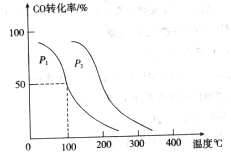The willingness of doctors at several major medical centers to apologize .to patients for harmful errors is a promising step toward improving the rather disappointing quality of a medical system that kills tens of thousands of innocent patients a year inadvertently.
For years, experts have lamented that medical malpractice litigation is an inefficient way to deter lethal or damaging medical errors. What they noticed, simply put it, is that most victims of malpractice never sue, and there is some evidence that many patients who do sue were not harmed by a physician’s error but instead suffered an adverse medical outcome that could not have been prevented. The details of what went wrong are often kept secret as part of a settlement agreement.
What is needed, many specialists agree, is a system that quickly brings an error to light so that further errors can be headed off and that compensates victims promptly and fairly. Many doctors, unfortunately, have been afraid that admitting and describing their errors would only invite a costly lawsuit.
Now, as described by Kevin Sack in The Times, a handful of prominent academic medical centers have adopted a new policy of promptly disclosing errors, offering earnest apologies and providing fair compensation. It appears to satisfy many patients, reduce legal costs and the litigation burden and, in some instances, helps reduce malpractice premiums. Here are some examples from colleges of the United States: at the University of Illinois, of 37 cases where the hospital acknowledged a preventable error and apologized, only one patient filed suit; at the University of Michigan Health System, existing claims and lawsuits dropped from 262 in August 2001 to 83 in August 2007, and legal costs fell by two-thirds.
To encourage greater candor, more than 30 states have enacted laws making apologies for medical errors inadmissible in court. That sounds like a sensible step that should be adopted by other states or become federal law. Such laws could help bring more errors to light. Patients who have been harmed by negligent doctors can still sue for malpractice, using other evidence to make their case.
Admitting errors is only the first step toward reforming the health care system so that far fewer mistakes are made. But reforms can be more effective if doctors are candid about how they went astray. Patients seem far less angry when they receive an. honest explanation, an apology and prompt, fair compensation for the harm they have suffered.
While many specialties call for a disclosure mechanism, some physicians are worrying about()
A. exposure to the media
B. describing their mistakes in details
C. compensating victims promptly and fairly
D. involvement in an expensive civil case
 的原料。已知:
的原料。已知:











 与
与 反应生成
反应生成 的热化学方程式为 。
的热化学方程式为 。 与
与 ,在不同压强下合成甲醇。
,在不同压强下合成甲醇。 的平衡转化率与温度、压强的关系如下图所示:
的平衡转化率与温度、压强的关系如下图所示:

 (填“<”、“>”或“=”)
(填“<”、“>”或“=”) 、
、 压强时,平衡常数为 (用含
压强时,平衡常数为 (用含 的代数式表示)。
的代数式表示)。 电极通入的
电极通入的 为 ,电极反应式是 。
为 ,电极反应式是 。
 溶液,当得到
溶液,当得到 铜时,参加反应的气体
铜时,参加反应的气体 的体积应为
的体积应为  (标准状况)。
(标准状况)。

 2分
2分 2分
2分 ) 1分
) 1分 2分
2分 ,所以反应热是-321.5kJ/mol+250.3 kJ/mol-90 kJ/mol×2=-251.2 kJ/mol。
,所以反应热是-321.5kJ/mol+250.3 kJ/mol-90 kJ/mol×2=-251.2 kJ/mol。 <
< 。
。 。
。 。
。